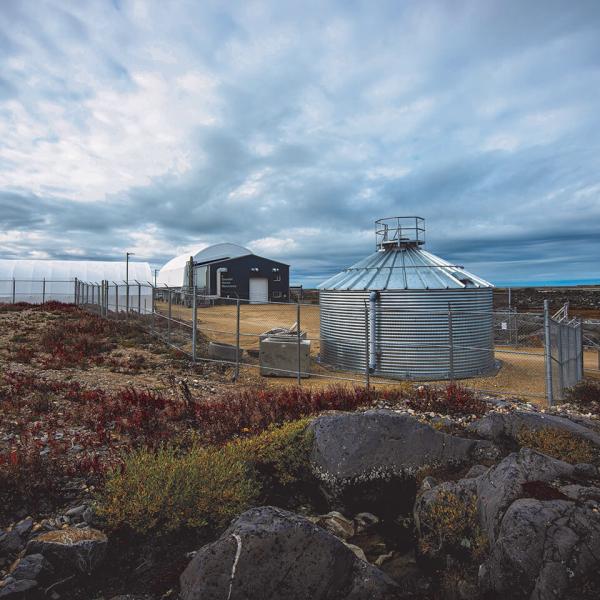In May, 2016, a northern Alberta wildfire roared through parched boreal forest, hell bent for Fort McMurray. The conflagration incinerated entire neighbourhoods and forced the evacuation of about 90,000 people from the city and surrounding areas. The blaze, which swept into Saskatchewan, took more than a year to extinguish, eventually consuming about 600,000 hectares (an area larger than all of Prince Edward Island) and costing nearly $10 billion in damages.
RCMP don’t know if the blaze, which was sparked by human activity and is still under investigation, was set intentionally.
The inferno is one of the motivations behind the creation of the newly opened Environmental Forensic and Arson Laboratory, located at Mount Royal University (MRU) in Calgary. The world-class facility is undertaking cutting-edge investigations on behalf of police, government and insurance companies looking into the origin of wildfires and arsons.
Chemist Gwen O’Sullivan, who chairs MRU’s Department of Earth & Environmental Sciences, heads the $1 million lab. It will compile data detailing how fires started and the type and origins of the accelerant used, helping facilitate more successful criminal prosecutions. “We’re using advances in analytical chemistry to give us better insight into evidence that we couldn’t see before, but now can with these new tools,” says O’Sullivan.
Providing new insights for arson investigations through enhanced fire forensics
CFI funding has helped to enhance the capabilities of the lab’s multi-dimensional gas chromatography instrument. The funding also helped finance a new, bigger 1,055-square-foot lab and the addition of basic but important equipment like fume hoods. An automated robotic system attaches to the chromatography instrument, analyzing liquids, solids or gases.
These new capabilities are especially important for insurance companies, helping them assess smoke-damage claims, says Court Sandau, who is the lab’s research collaborator. Sandau owns the Calgary-based chemistry and environmental forensics consulting firm, Chemistry Matters, which is still investigating the Fort McMurray fire.
When a fire occurs, a canine detection unit determines the location of the accelerant. The organic material from that site is collected and brought to a laboratory for testing. The charred evidence contains thousands of organic chemicals, highlighting the need for highly advanced and sensitive technology that can isolate the accelerant, which the MRU lab offers. “It is an analytical technique that’s novel in that it allows us to measure almost every single organic chemical that’s present in a sample,” says Sandau.
Chromatography establishes whether an accelerant is diesel, starter fuel, or light, medium or heavy gasoline. It will even be possible to identify the provenance of the accelerant. Two critical questions will be answered: was a fire deliberately set? If so, can preventions be put in place to avoid such criminal acts in the future? Samples of the materials and the data from these extensive analyses will be preserved for possible reanalysis at a later date, should this be required. This is especially important in court cases.
The lab will also be able to determine the source of oil spills. In some cases, a spill occurs near the intersection of several pipelines, making it unclear which petroleum company is at fault. Techniques used in the laboratory can pinpoint which pipeline leaked by analyzing a sample from the spilled oil, which has a unique chemical fingerprint, says O’Sullivan.
Using new evidence to shape fire management policy as wildfires worsen due to climate change

The lab’s findings will help governments improve forest fire management, including enhanced design of communities located in forest fire-prone regions. This will help shape policy: should fire barriers be erected? How much vegetation cover exists that may act as fuel for a blaze? Are there sufficient fire hydrants? Communication with the public will be further strengthened by the lab pinpointing what substances are in wildfire or arson smoke — information that can be critical for those with chronic asthma, children or the elderly.
Finding answers to these questions is urgent. In Canada alone, there are upwards of 14,000 cases of arson every year, costing insurance companies about $500 million, says O’Sullivan. The five percent of arson fires that result in death have a high clearance and conviction rate. However, 85 percent of property arson cases remain unsolved. With wildfires, about 6,000 blazes consume anywhere from 500,000 hectares to 4.5 million hectares each year. Typically, 42 percent are caused by humans, either intentionally or accidentally. Annual damage is about $265 million for crops and property. The environmental costs associated with ecosystem devastation are incalculable, O’Sullivan says, adding that climate change will worsen wildfires in the coming years.

Still, some answers may never be found. The Fort McMurray case will remain open until it is solved, says Sandau. But will the cause ever be known? After this length of time, even with the enhanced research capabilities of the new forensic lab, “I’m not very optimistic.”







